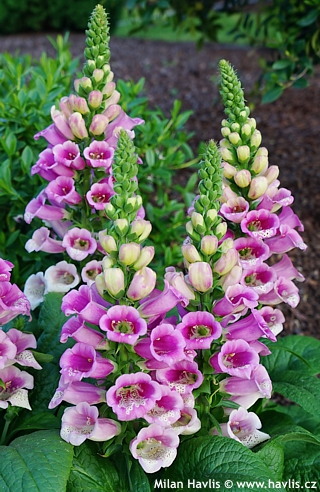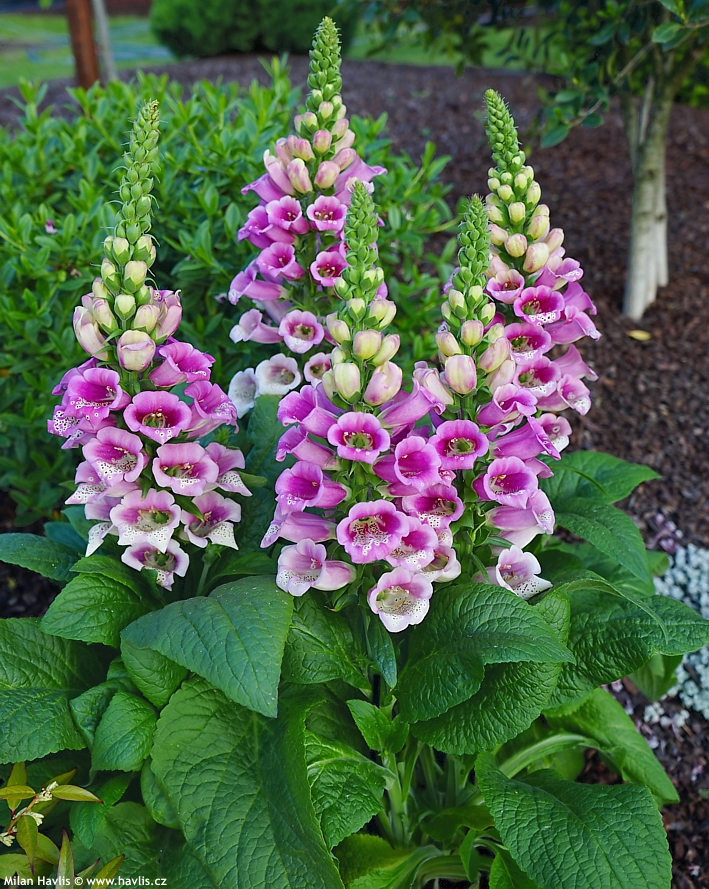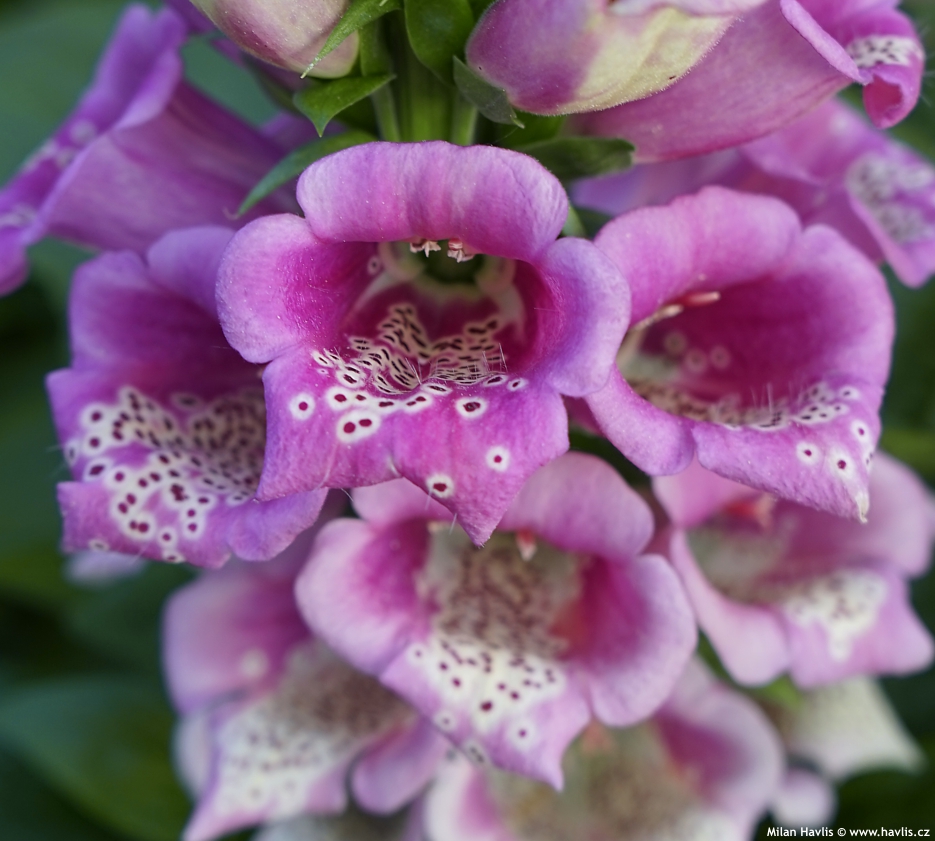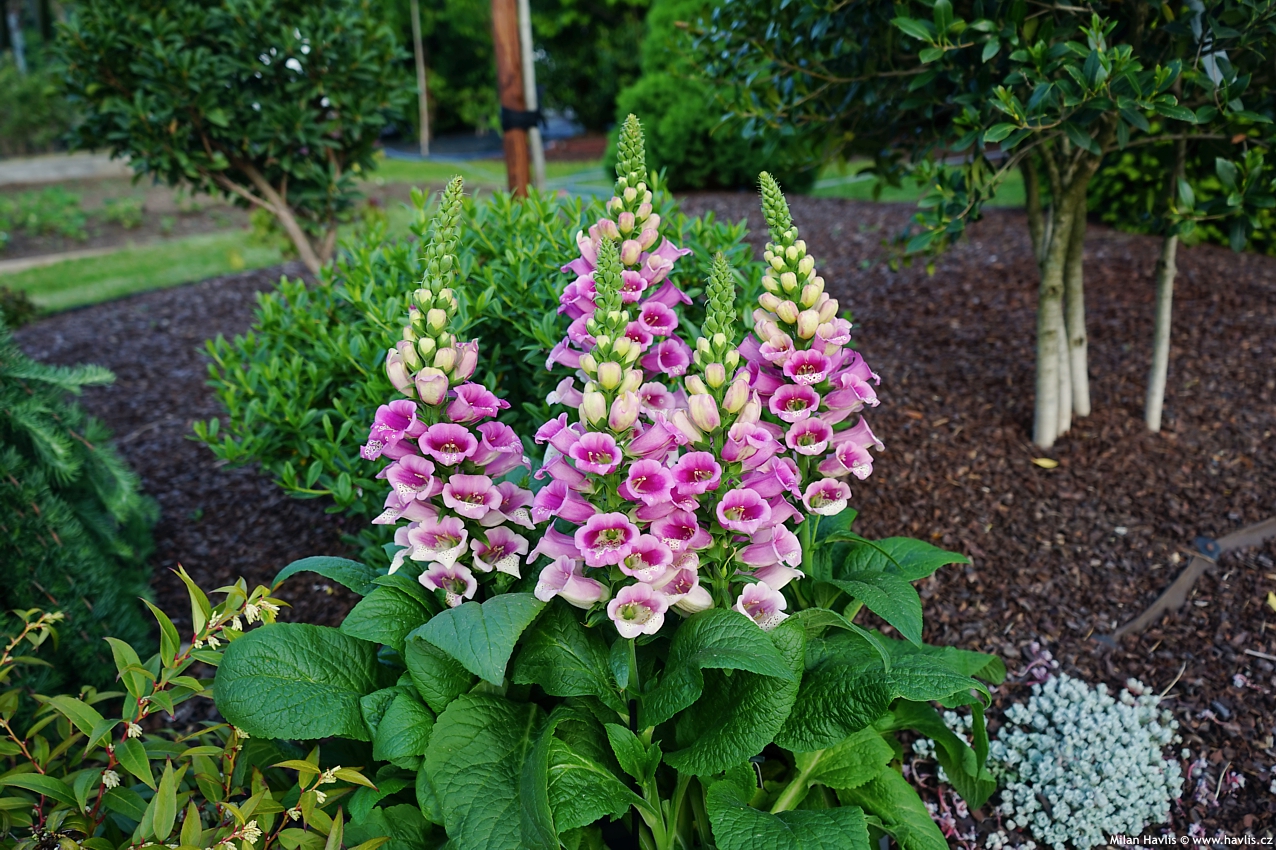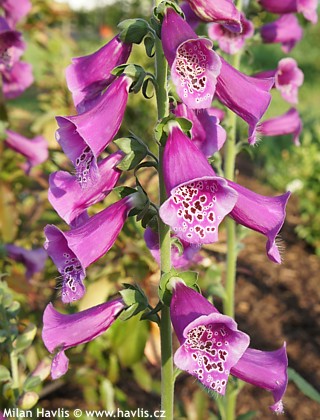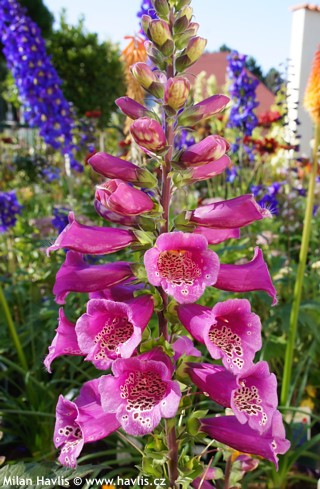Digitalis 'SWEET DREAMS' common foxglove
size/type
mid-sized perennial,tall perennial
usual height
0,8-1,2m
usual width
0,3-0,6m
leaves
deciduous broadleaf
colour of leaves
flowers
showy
colour of flowers
blooming time
June-July
location
full to partial sun
USDA zone (lowest)
4 (down to -34°C)
winter protection
for zone 5+6

for zone 7

categorized
Digitalis
Common foxglove is a European native and is found marginally in our country, too. Its flowers are so attractive that breeders keep hybridizing them and every now and then they introduce a new, improved variety. These improvements usually involve not just pretty flowers but mainly their life span – in the wild common foxglove is a biennial which needs one whole year for plant maturation to produce flower stems the year after. No one is so patient today. So new varieties are hybrids eliminating waiting so they either flower in their first year or they behave like clumping perennials without a need for self-seeding.Description of the plant:
Sweet Dreams is a medium tall foxglove variety with large, dark pink, funnel-shaped flowers with purple red dots margined white inside the throat. The flowers are densely clustered along about 1m tall stems. Blooming begins in mid June and continues until late July, or if you cut off the main stem immediately after the main flowering a few shorter ones will push up to continue flowering until late summer or early autumn. It is a biennial which needs to set seeds for another generation and often blooms already in its first year.Leaves are large, coarse, broadly lance-shaped, mid green, toothed at margins, and hairy. Foxglove is a medical plant but also quite toxic. Even though it does not make any fruit-like looking berries that would attract children it is not recommended for mass plantings near playgrounds, school yards, or kindergartens.
Foxglove will grow in almost any soil apart from too wet or too dry. In the wild it is found in humus-rich soils in light woods and its margins, which means that it will love partial shade in your garden, or full sun if kept moist. Excess fertilizing may result in production of enormous leaves but no flowers. Hardy to about -34°C (USDA zone 4).
Last update 04-12-2020.
QUICK PRICE OVERVIEW
CURRENTLY SOLD OUT
WANT TO TRY A SIMILAR PLANT?












